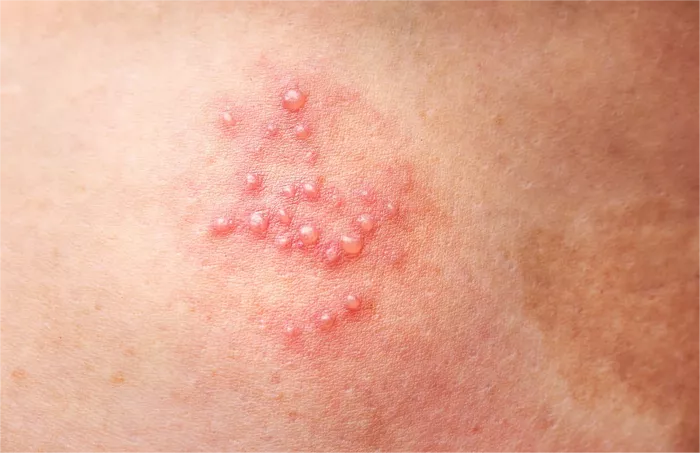Shingles, medically known as herpes zoster, is a viral infection caused by the varicella-zoster virus (VZV), which also causes chickenpox. After a person recovers from chickenpox, the virus remains dormant in the nervous system. Later in life, usually when the immune system weakens due to factors like aging, illness, or stress, the virus can reactivate, causing shingles. The primary symptom of shingles is a painful rash that typically appears as a band or strip of blisters on one side of the body. Other common symptoms include itching, tingling, and burning sensations, often accompanied by fever, headache, and fatigue.
Valacyclovir’s Role:
Valacyclovir is an antiviral medication that is commonly used to treat infections caused by herpes viruses, including shingles. It is the prodrug of acyclovir, meaning it is converted into acyclovir in the body, which then works to inhibit the replication of the virus. Valacyclovir helps to shorten the duration of shingles and alleviate symptoms by stopping the virus from multiplying. By reducing viral replication, valacyclovir can also help prevent complications associated with shingles, such as postherpetic neuralgia (PHN).
Duration of Shingles with Valacyclovir:
The duration of shingles can vary from person to person, depending on factors such as age, overall health, and the promptness of treatment initiation. However, when treated with valacyclovir, the progression of the infection is typically shortened. In most cases, the blisters associated with shingles begin to scab over within 7-10 days of starting valacyclovir treatment, and the rash usually clears up within 2-4 weeks. It’s important to note that individual responses to treatment may vary, and some people may experience faster or slower healing times.
Factors Influencing Duration:
Several factors can influence the duration of shingles with valacyclovir treatment. Age is a significant factor, as older adults may experience a longer recovery period due to age-related changes in the immune system. Additionally, overall health plays a crucial role, as individuals with compromised immune systems may have a slower response to treatment. The promptness of treatment initiation is also important, as starting valacyclovir therapy early can help to maximize its effectiveness in combating the virus.
Benefits of Valacyclovir:
1. Faster Healing Time: Valacyclovir helps to accelerate the healing process by suppressing viral replication, leading to quicker resolution of symptoms.
2. Reduced Severity of Symptoms: By limiting the spread of the virus, valacyclovir can alleviate the intensity of pain and discomfort associated with shingles.
3. Lower Risk of Complications: Timely administration of valacyclovir reduces the likelihood of complications such as postherpetic neuralgia (PHN), a condition characterized by persistent nerve pain following the resolution of the rash.
Potential Side Effects:
While valacyclovir is generally well-tolerated, some individuals may experience side effects. Common side effects include headache, nausea, and dizziness. It’s essential for patients to discuss any concerns or adverse reactions with their healthcare provider.
Importance of Early Treatment:
Early initiation of valacyclovir therapy is paramount for achieving optimal outcomes in shingles management. Initiating treatment within the first 72 hours of symptom onset has been shown to be most effective in reducing the duration and severity of the infection. Therefore, individuals experiencing symptoms suggestive of shingles should seek medical attention promptly.
Additional Treatment Options:
In addition to antiviral therapy, several other treatment options may be recommended for managing shingles symptoms. These include over-the-counter or prescription pain relievers, topical creams containing capsaicin or lidocaine to alleviate discomfort, and nerve blocks for severe pain. Complementary therapies such as acupuncture or relaxation techniques may also provide relief for some individuals.
Consultation with a Doctor:
It’s essential for individuals experiencing symptoms of shingles to consult with a healthcare professional for proper diagnosis and treatment. While this article provides valuable information, it is not a substitute for professional medical advice. A doctor can evaluate the individual’s condition, recommend appropriate treatment options, and monitor for any potential complications.
Conclusion
In conclusion, valacyclovir plays a crucial role in the management of shingles by reducing the duration and severity of the infection. Early intervention with antiviral therapy is key to achieving favorable outcomes and minimizing the risk of complications. By understanding the benefits of valacyclovir and seeking timely medical attention, individuals can effectively manage shingles and expedite their recovery process.

























